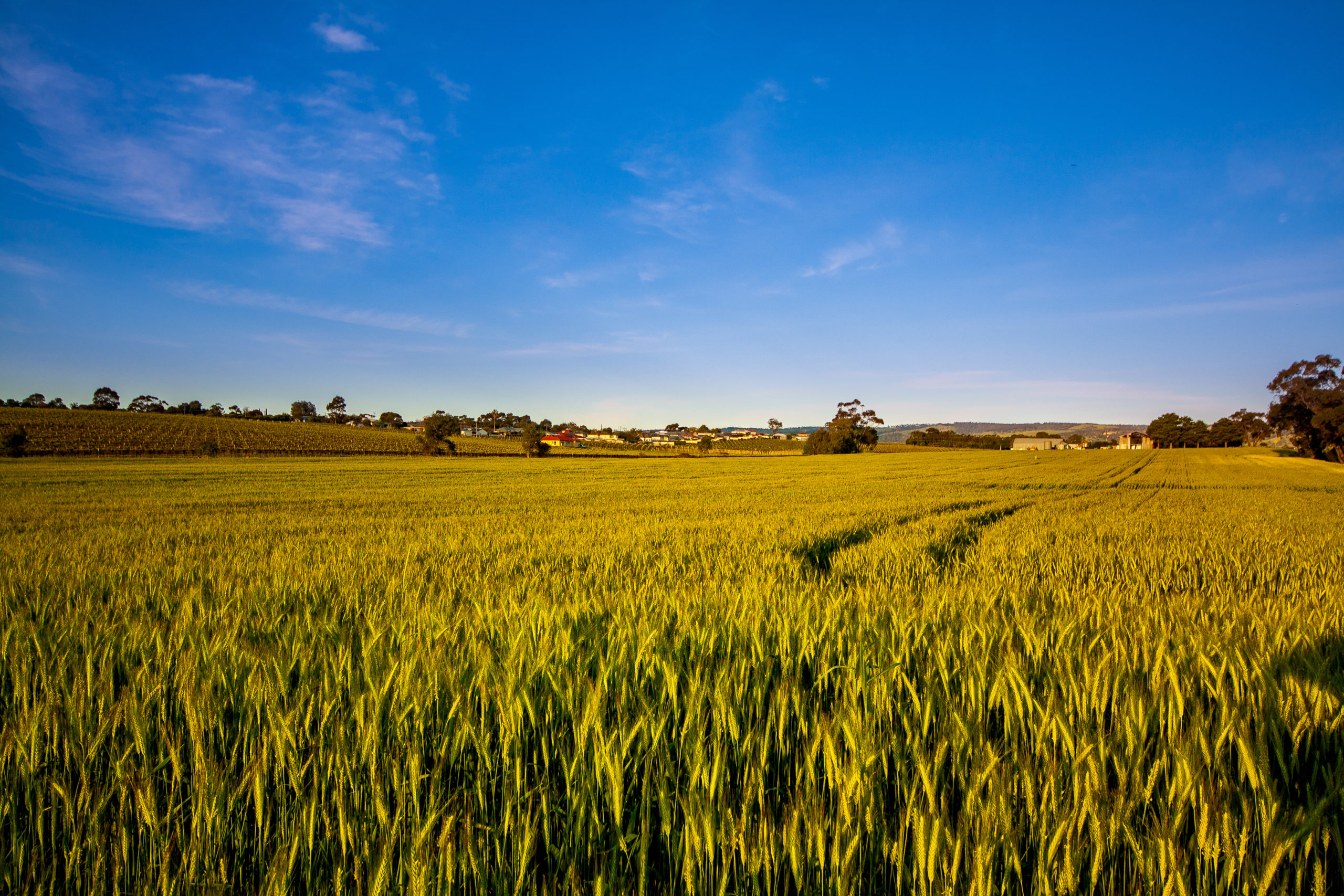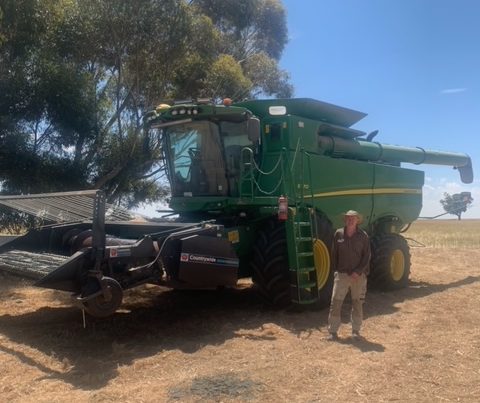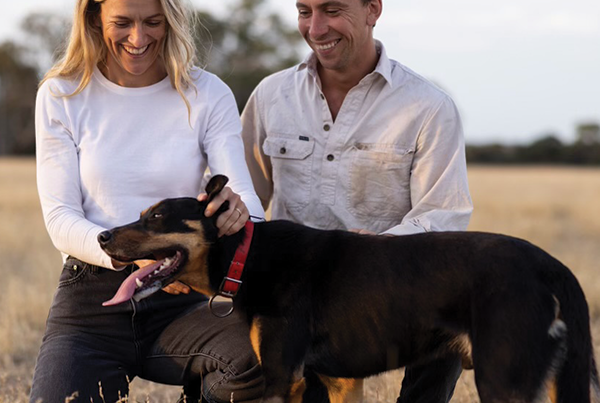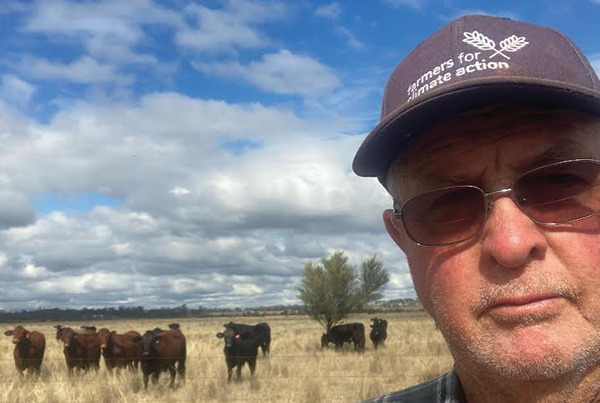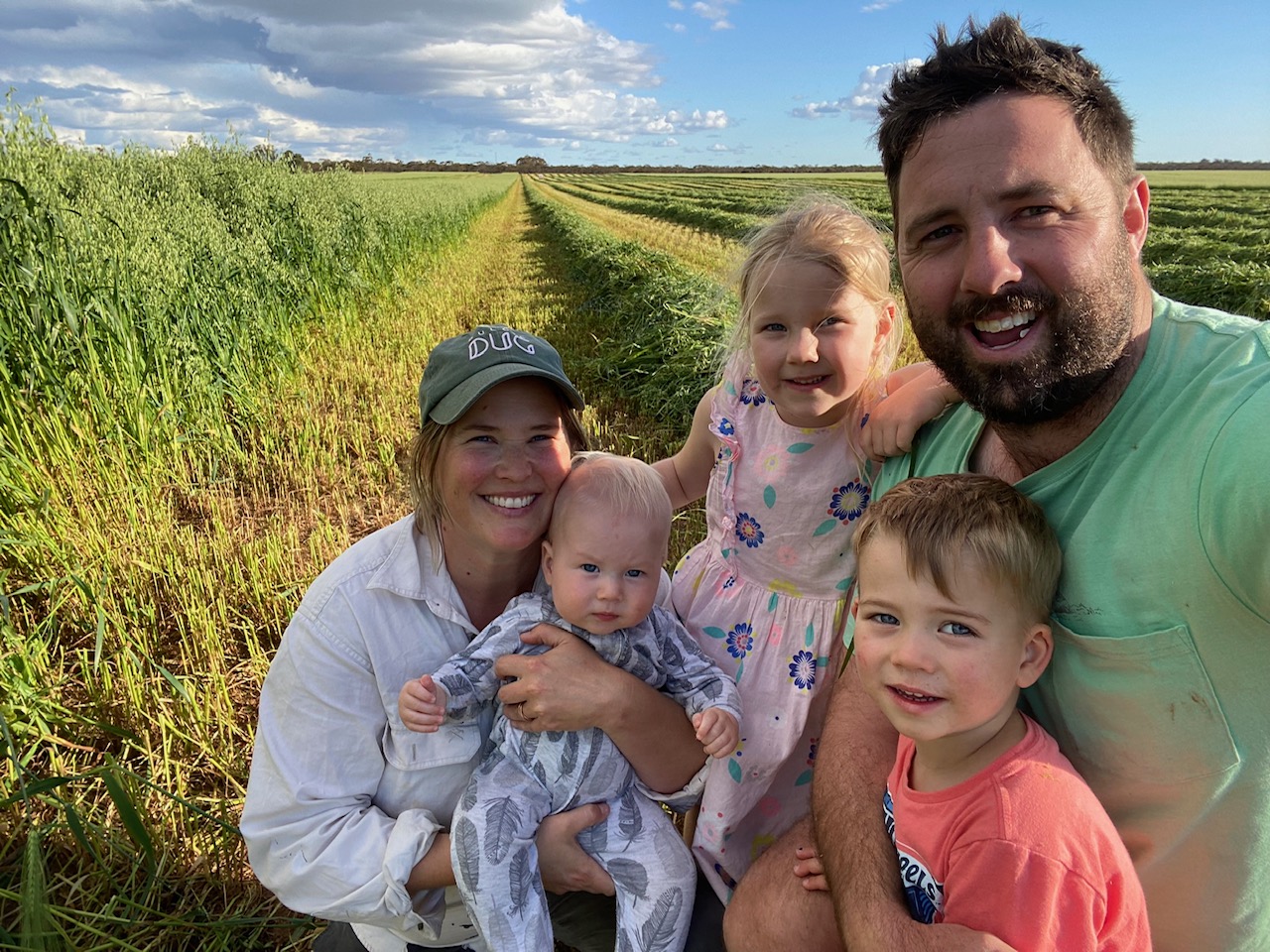
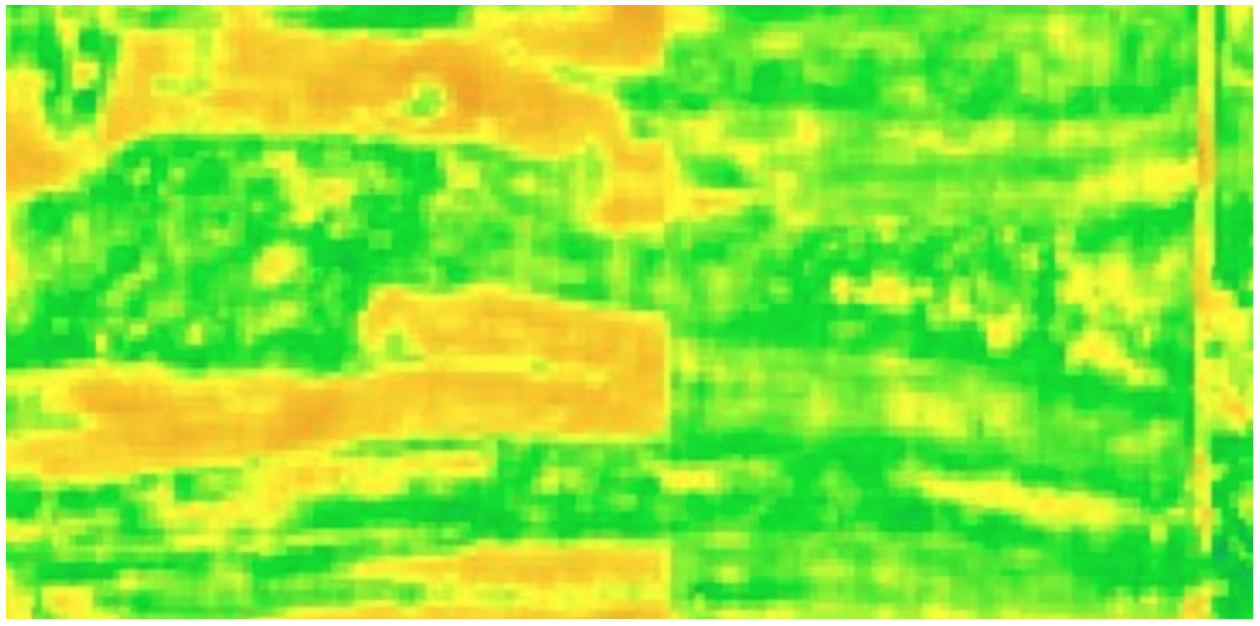
NDVI image taken on the 10th of July, 2022 of a paddock where delving has occurred.
At a glance
Who: Lou Flohr
What: Mixed Farmer
Where: Lameroo, South Australia
Can you tell us about your property?
I farm with my partner, Andy and my parents Gary and Janet at Lameroo in the low rainfall region of South Australia. We currently manage around 8000 acres, and grow a range of crops including wheat, barley, export oaten hay, lentils, beans, lupins and vetch. We have recently transitioned out of a self replacing merino flock, into a small flock of Ultra-white sheep.
What are some of the opportunities you see for your business/property in the coming years?
We are looking to grow our Ultra-white livestock operation. These shedding sheep fit into our program nicely and are incredible at converting feed to red meat. With this increased efficiency, we are able to turn lambs off quickly. Because they are shedding, we no longer have to shear the sheep, and we don’t need to practice mulesing, as the sheep are not vulnerable to fly strike.
Soil amelioration is allowing us to improve our least productive soils on the farm by improving constraints such as compaction and water repellency, and improve our water holding capacity. There could be future opportunities to trade carbon, but we want to be well informed and know all the risks associated with this market before making any commitments. At this early stage, we see no opportunities for us in the short term.
And what are your main challenges now, and into the future?
Finding the right enterprise mix to suit our variable climate. I believe we spread our risks well with having a mixture of crop and fodder types, as well as running livestock, but there is room for improvement
How has climate change impacted your farm business?
Due to the warmer conditions, we harvest earlier than growers did 50 years ago. The variable growing conditions and declining rainfall have shifted us from growing just grain crops to a mixture of grain and fodder. This allows us to have a ‘harvest’ in the form of hay, in the event we miss out on the spring rain that we need to fill our grain crops. We are also very vulnerable to frost damage in spring, and hay allows us to mitigate this risk on a portion of our cropping country.
What are some of the on-farm adaptations or changes you’ve been employing in recent years and what’s driving them?
How successful have they been, and what benefits have you seen as a result? (have you collected any evidence of these benefits, and if so could you share this?)
Soil Amelioration is allowing us to improve our sands. This picture shows an NDVI image taken on the 10th of July, 2022 of a paddock where delving has occurred on a farm we have recently purchased. The paddock on the left hand side of the fence hasn’t been delved, and the paddock on the right hand side of the fence has been. The hills run east to west, and the ‘green’ is the high NDVI reading, meaning improved crop growth. This will have both productivity benefits, as we will be able to grow a better crop, but it will also have environmental benefits as we will be able to establish a crop faster, as it is no longer water repellent, and due to the improved clay content of the soil, we will be able to store more carbon. This practice has enormous dual benefits for the growers and the environment, and I believe this is an excellent display of growers looking to improve their farms for both economic and environmental benefits.
What are your hopes for Ag in Australia, into the future?
Australian growers are some of the most efficient and productive growers in the world given their rainfall. I would love to see the grower community grow to better communicate this. I would also like to see tools in the future that allow us to better manage our input cost risks such as tools to manage the price of fuel and other inputs. Through our responsible use of inputs, I hope to be able to use crop protection products into the future so we can continue to grow safe and affordable food for the future.

